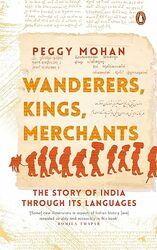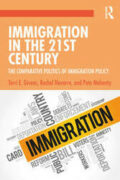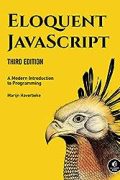
Rating: 8.3/10.
Wanderers, Kings, Merchants: The Story of India Through its Languages by Peggy Mohan
Book about the languages of India and its history, written by a linguistics researcher, focusing on language change and how languages evolved through contact over time. It is an enjoyable read for anybody interested in linguistics, especially about languages that are not well studied in the western circles. I was surprised to learn how much the Indian languages have influenced each other, and how neighboring languages like Persian has affected the linguistic landscape through centuries of conquest and human migration.
Chapter 1. The author grew up in Trinidad, is a native speaker of Creole. Many similar varieties of Creole on the Caribbean islands have a similar structure: even though they pulled vocabulary from different European languages, they maintain the substratum structure of West African languages, from where the original speakers came. This explains a lot about the situation in the linguistic diversity of India in ancient times and how those languages came to be.
Chapter 2. Sanskrit is one of the oldest written languages in India, and originally, it did not have retroflex consonants, which is a feature in almost all Indian languages. This is because Sanskrit is an Indo-European language brought in by invaders from the northwest, and this language did not originally have retroflex. The invaders were the Aryan people, who were male, and as they invaded, they took local wives who spoke various Dravidian languages, which do have retroflex. As the locals tried to learn the prestigious Sanskrit, they introduced local accents and changed the language; language creation occurs via creoles, and is not a gradual process but sudden shifts that happen within a generation or so. Much of linguistic evidence comes from the Rig Veda, an ancient piece of work written in the earliest form of Sanskrit, Vedic Sanskrit. Even then, it has signs of consonants that reflect Dravidian influence on the language since it was already several centuries after the initial invasion when the verses were written down.
Chapter 3: A speaker of a North Indian language would be able to follow a lot of a movie in Malayalam, a South Indian Dravidian language, because Malayalam has a lot of Sanskrit words, particularly if the topic is historical or religious. Before about the 14th century, Malayalam had few Sanskrit words, but now many nouns are from Sanskrit, but the basic words and particles that join together the world are all Dravidian. These words entered the language when high-status Sanskrit speakers migrated into the area, and locals replaced many words with those used by the migrants. Modern Kerala has a lot of migrants from elsewhere, but they have not changed the Malayalam language because speakers of these languages are not as high-status as those that brought Sanskrit.
Chapter 4: Hindi and other languages in the North Indian area have a number of features that are unusual, such as verb formation that has gender derived from nouns, ergativity structures, and compound verbs are more common in Hindi-like languages than in neighboring ones. This could not have originated from Sanskrit, all Dravidian languages, or Munda languages, which do not possess these structures. This suggests that these features all stem from an older substratum language that was spoken in the area before the arrival of the Aryans. Essentially, all the Indo-Aryan dialects, like Hindi and Marathi, evolved slowly in a manner similar to the creole creation process in the Caribbean, but over a longer time period, similar to how the Romance languages evolved from Latin. At first, local Prakrits were similar to Sanskrit grammatically, but with local influence, then gradually, the local Pre-Vedic languages replaced their words with Sanskrit ones and eventually even their grammatical particles with Sanskrit-like inflections. However, the last vestiges of the languages that remain are the grammatical structures like ergativity.
Chapter 5: Hindi shares many words with Turkish, as both have been under Persian influence. This is not because Persians ever conquered these two areas, but the Uzbek-speaking invaders of the Mughal Empire brought in words from their native Uzbek language, as well as Persian, as the Mughal rulers used Persian as their administrative language. Children often grew up learning Hindi from their mothers, but the sons were educated in Persian, as that was the language of the elite. Persian remained the prestige language up until British colonization; the British did not want the courts to be conducted in Persian, which locals did not understand, but preferred Hindi. For a brief while, there was a Sanskritized version of Hindi where Persian words were replaced with Sanskrit ones, but this did not really gain traction. Currently, there is a lot of influence from English, which has mostly replaced the role of Persian now that English is the preferred language in many situations and Hindi replaces a lot of words with English ones.
Chapter 6. Nagamese is a pidgin language spoken in Nagaland, a mountainous region in Eastern India, where the tribes speak a large variety of different tribal languages that are not mutually intelligible; Nagamese arose to fill the need to communicate between them. However, Nagamese has complexities in morphology and syntax that are unusual for pidgin languages. In contrast to the Caribbean Creoles which were formed extremely quickly, Nagamese formed much more slowly over a longer period of time. This is the more common situation, as the forced slavery that happened in the Caribbean is rare in history. The region likely had a different substrate, as East Indian language is like the Naga languages and Assamese has no retroflex, furthermore, genetics shows that many groups, like the Munda, migrated from the East. The current situation in Nagaland is that Nagamese is mostly used as a trade language but is starting to acquire native speakers, while the tribal languages are still widely spoken, giving a picture of a situation that is rapidly changing.
Chapter 7: English began in India with the arrival of British colonization: as the British set up trade in India, they advocated that English should be the language of education, even though it is a foreign language, as otherwise, the Indian population would use either Sanskrit or Persian, which were equally foreign to them. Initially, only the men arrived in India, and they blended in with the local community and took local wives. When women also arrived, most Indians had little contact with the British causing Indian English to pick up Indian features like retroflex, similar to the Prakrits. The situation with English today is that Indian children are not learning English as a second language, but rather it is in a state of diglossia: English is only used for some situations and the native Indian language is used in others, so they are not able to translate sentences from one language to the other as a bilingual would be. Knowledge of English varies significantly between social classes, especially in the lower stratum, kids may not know any English at all, which is a challenge for teachers due to such a wide variety of English levels. Those that have knowledge of English often speak different levels of Hinglish depending on who they are talking to; even major languages like Hindi and Bengali are at risk of losing ground to English, as it has become the main language for schooling.
Chapter 8. In conclusion: the entire history of India is a story of language change. The author argues that this is a normal process as people move around and communities change, and is better than attempting to preserve a static language that is no longer being used and evolving.



